Art Fairs
Design Miami’s Downscaled Fair in Basel Comes With Confirmation of an Upcoming Paris Edition
This year's fair has a heavy French accent, reflecting its ambitions for Paris in October 2023.
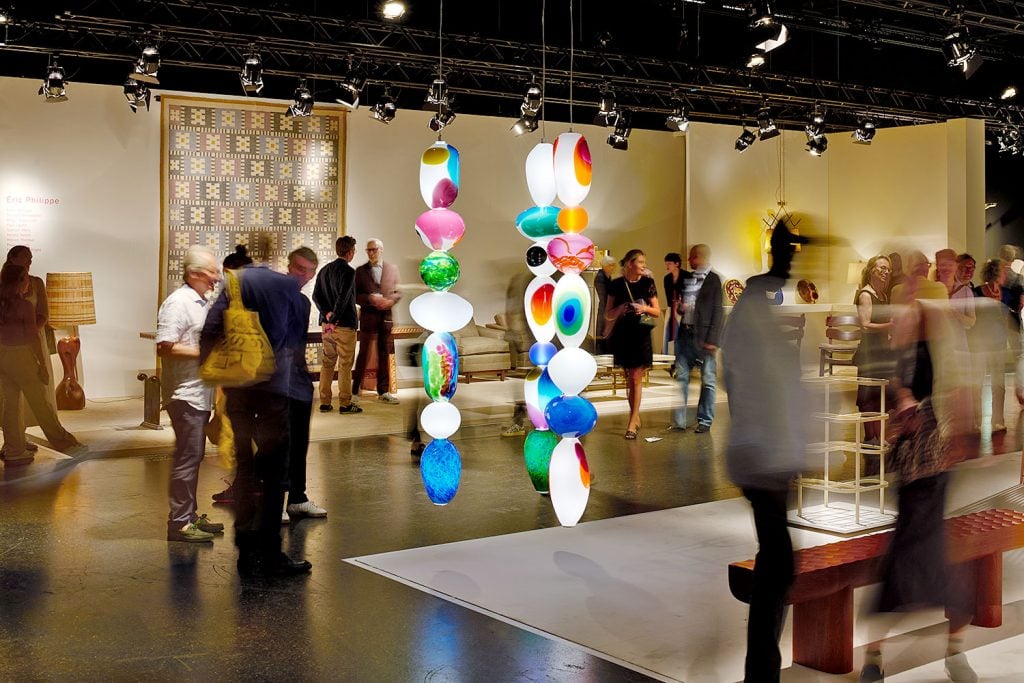
This year's fair has a heavy French accent, reflecting its ambitions for Paris in October 2023.

Lee Carter

Running in tandem with Art Basel, Design Miami Basel (June 13–18) has returned to the ground floor of the Messeplatz in Basel, Switzerland. The 17th edition showcases 26 international galleries—down from last year’s 34—specializing in collectible as well as historic design, ranging from furniture and lighting to jewelry and art objects.
The downscaled fair has a perceptible Gallic accent, featuring several Parisian galleries and many top French design talents. On June 12, Design Miami confirmed that it would finally debut a Paris edition in October 2023, augmenting its annual presence in Miami and Basel, and coinciding with Art Basel’s Paris+ art fair. While unexpected, the news wasn’t exactly surprising in light of last year’s efforts to launch a French edition—ultimately scuttled due to “security reasons.”
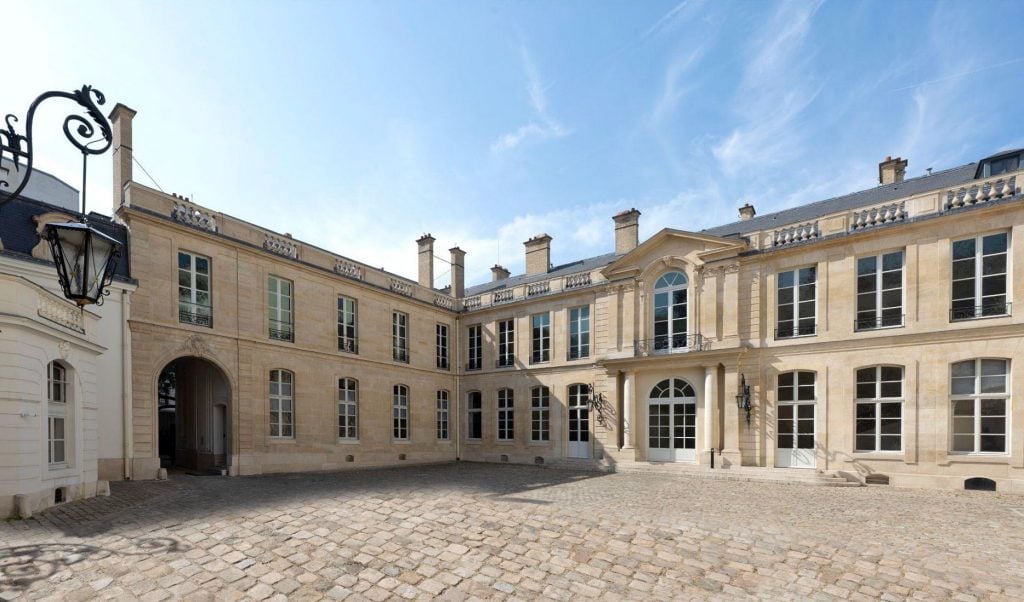
L’Hôtel de Maisons, Paris. Photo: Fabrice Gousset. Courtesy of Design Miami.
Artnet News spoke with Design Miami’s CEO, Jen Roberts, who said that since so many exhibitors in Design Miami Basel already hail from France, the renewed focus on Paris is a “natural” evolution. “It’s a commitment to the city of Paris, which is already the capital of collectible design and home to many of the world’s leading design galleries,” she said, explaining that the decision came after lengthy negotiations with and the full support of the local French government, including the mayor’s office.
Roberts said that the upcoming Paris presence, which won’t affect its sister fairs, will consist of activations and pop-ups around Saint Germain-des-Prés in the 6th arrondissement, in the Left Bank, in addition to the customary gallery booths inside l’Hôtel de Maisons. The 18th-century mansion was previously home to Karl Lagerfeld and several generations of the Pozzo di Borgo political family.
While Roberts would not comment on any specific galleries that have signed on so far, she did say it will be a “robust program” of up to 25 exhibitors. In the meantime, here are some of the standouts from Design Miami in Basel.
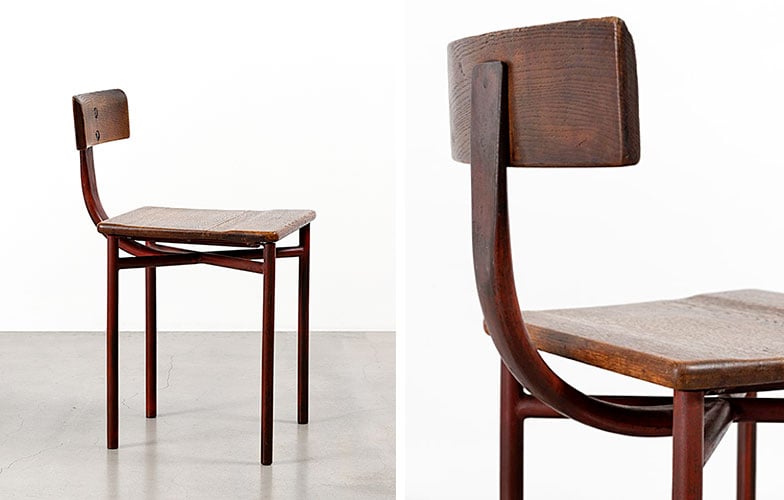
Jean Prouvé, Cité chair (1932). Courtesy of Galerie Patrick Seguin.
Since its founding in 1989, Seguin has played a significant role in bringing French designers into the limelight—especially Jean Prouvé. For Design Miami Basel, the gallery presents an array of pieces from the French designer—who referred to himself as a “factory man” for his practical, machined aesthetic—starting with a selection of chairs demonstrating his pragmatic ideals. The most notable of these is his solid-oak Cité chair, designed in 1930 for a student residence hall at the Cité Universitaire in Nancy, France.
Aware of the limitations of woodworking and keen to embrace modernity, in particular mass production, Prouvé soon moved on to steel and aluminum. A selection of three aluminum pieces—a table, wardrobe, and sideboard—from his formative time in Cameroon in the 1960s, is also on view. Prouvé was invited by the government of Cameroon to design a school in the capital city of Yaoundé. He created a large, prefabricated metal building that is still in use today, establishing his reputation as a designer who could create functional and affordable buildings anywhere the world.
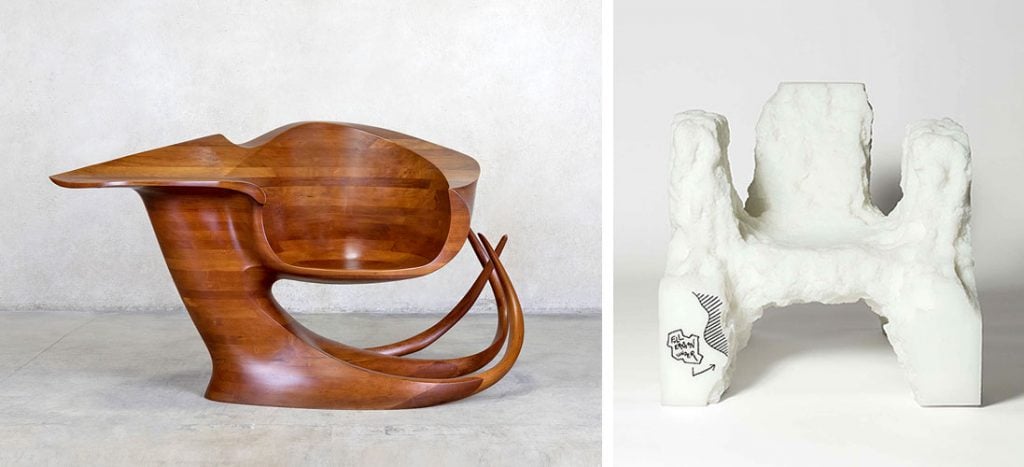
Left: Wendell Castle, Squid Chair with Table (1966). Right: Daniel Arsham, Shanghai Chair (2019). Courtesy of Friedman Benda.
New York’s Friedman Benda gallery highlights the impact of history on today’s masters with “Iconoclasts and Icons,” an exhibition of exemplary seating. The artisans include Shiro Kuramata, Andrea Branzi, and Ettore Sottsass, as well as more contemporary practitioners like Daniel Arsham, Ron Arad, Paul Cocksedge, Joris Laarman, Samuel Ross, Nendo, and Faye Toogood.
“’Iconoclasts and Icons’ seeks to represent the chaos of contemporary design,” said gallery owner Marc Benda, “distilling the explosive creative forces unleashed by the unending possibilities in our field.”
One highlight from the group is Wendell Castle, the American sculptor and furniture maker who’s often included in the ‘Big 4’ of Modern woodworking, alongside Wharton Esherick, George Nakashima, and Sam Maloof. Castle was especially skilled in the use of stack-lamination, a technique involving bonding and sanding thin sheets of wood to create a solid, three-dimensional form—making his furniture whimsical and playful, but also artful and sophisticated.
He was inspired by organic forms found in nature. His Squid Chair with Table (1966) is a sculptural piece of furniture that features sinuous appendages in solid cherry. The chair is supported by four tentacle-like legs, with a seat that suggests like a squid’s head. It’s a classic example of Castle’s affinity for strong yet lightweight furniture with complex curves.
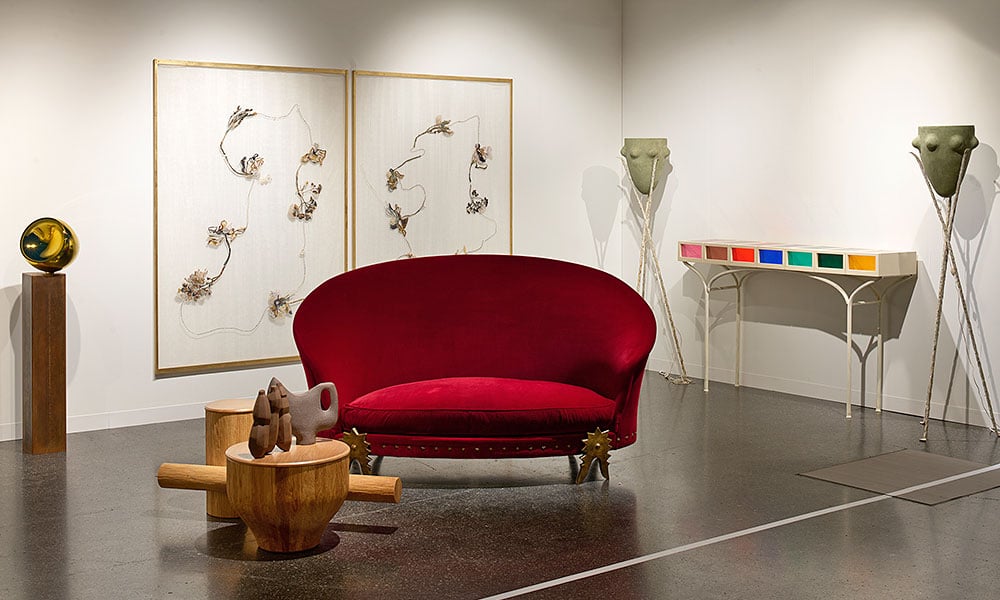
A selection of furniture by Garouste & Bonetti. Courtesy of Mouvements Modernes.
Located in the Palais Royal (in Jean Cocteau’s the first studio), Mouvements Modernes was founded in 2002 by Pierre Staudenmeyer. The design theorist also founded the space’s precursor, the legendary Néotù gallery, which blazed a trail for collectible design in the 1980s and ‘90s.
Those years are the theme of this booth at Design Miami Basel, in particular the work of Garouste & Bonetti. The design duo (Elizabeth Garouste and Mattia Bonetti, who worked from 1981 to 2001) was known for an eclectic and whimsical approach to furniture and objects, characterized by bold colors, unexpected materials, and playful shapes.
Garouste and Bonetti’s work—which spanned furniture, lighting, carpets, and ceramics—was often described as “postmodern” or “neo-romantic.” They rejected the reigning minimalist aesthetic of the time, and instead embraced a more expressive approach inspired by history and mythology. Mouvements Modernes has brought several items by Garouste & Bonetti to Basel, most notably a rainbow-colored console and a pair of tripods from their debut Barbare collection of 1981.
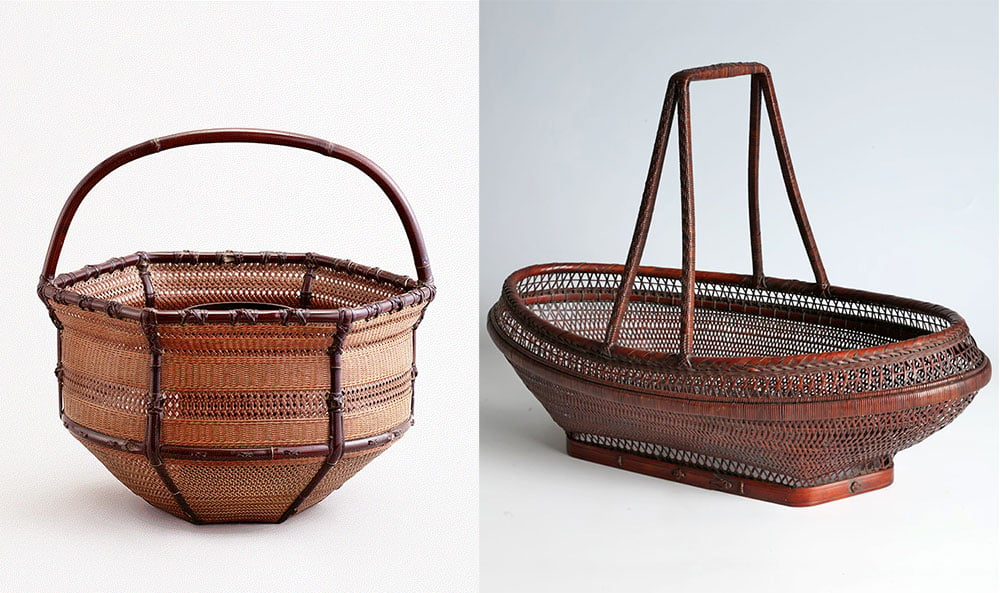
Japanese basketry. Courtesy of Thomsen Gallery.
For its fourth appearance at Design Miami Basel, New York’s Thomsen Gallery—founded by Erik Thomsen, a Danish-born dealer of Japanese art—offers an overview of ikebana bamboo baskets by Japanese masters from the early 20th century, considered the golden age of Japanese basketry. In addition to these woven works, the gallery has brought Japanese modern bronze vessels, gold-lacquered boxes, and contemporary porcelain vessels by Sueharu Fukami.
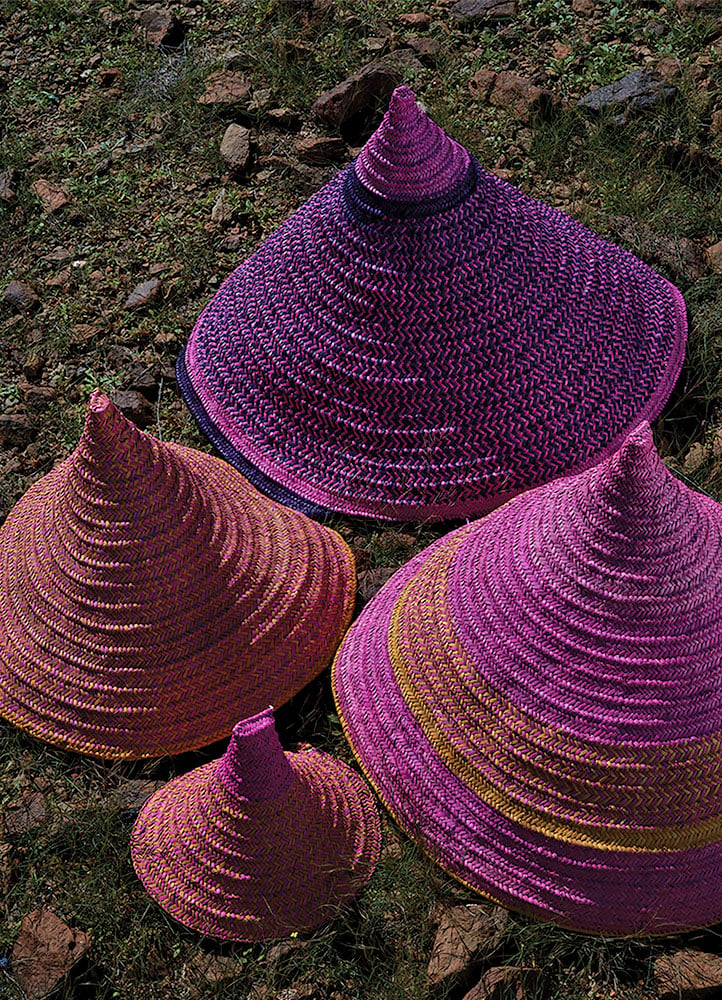
Safeefah food covers by Reem Saif Almazrouei. Courtesy of Irthi Contemporary Crafts Council.
Sharjah’s Irthi Contemporary Crafts Council makes its debut at Design Miami Basel this year alongside the commercial galleries. The UAE-based group works to empower local craftswomen who practice traditional Emirati artisanry, ensuring the preservation of indigenous craft heritage for future generations. Specifically, through in-depth gastronomy research, Reem Saif Almazrouei has crafted a collection of Emirati-inspired tableware created in a range of weaving techniques—a welcome departure from strict Euro-inflected modernism.
In addition, Ghaya Bin Mesmar presents a collection of chairs created through an exploration of palm-based weaving techniques, dyes, and materials. This collection is the second iteration of her chair collection, created in collaboration with Laura Blasco, Juanmi Juárez, and Alex Estévez from Barcelona-based Mermelada Estudio.
More Trending Stories:
Is Time Travel Real? Here Are 6 Tantalizing Pieces of Evidence From Art History